#hugo petrus
Text
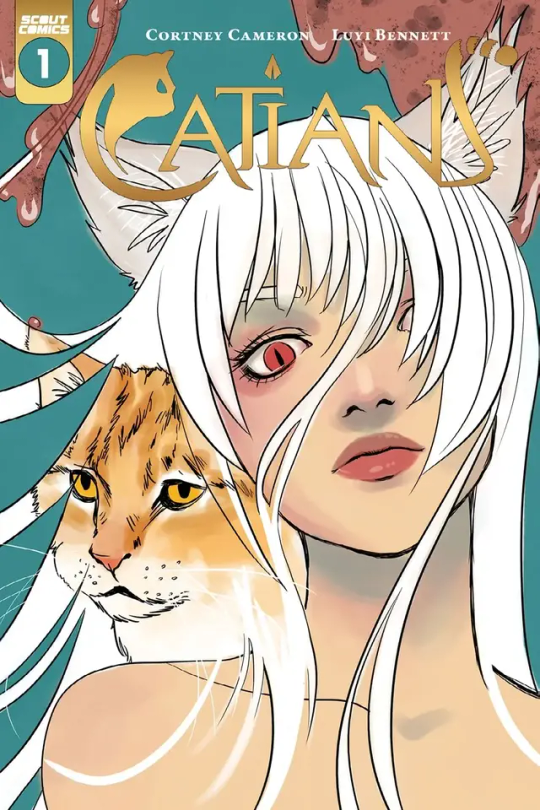
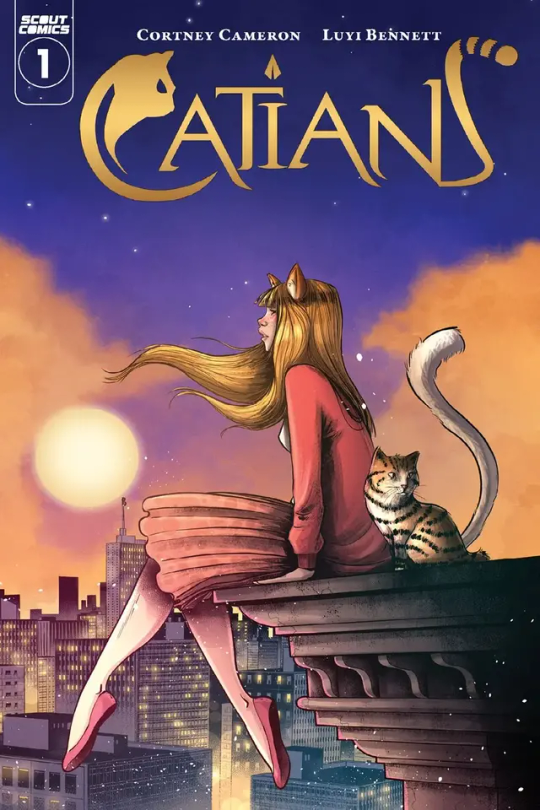

Catians #1 by Cortney Cameron and Luyi Bennett. Main cover by Bennett. Variant covers by (2) Paco Camallonga and (3) Hugo Petrus. Due out in November.
"Stray cat Felix leads a happy life skimming milk from his human friend Rose's convenient store, until the local protection racket turns violent. To save Rose's life, Felix breaks his vows and shares an ancient secret. Unfortunately, Rose uses her newfound knowledge to mix revenge and forbidden magic, unleashing a monstrous abomination that forces the mysterious Council of Cats to launch a global quest for the Relics of the divine Great Cat."
9 notes
·
View notes
Text
We need more commotion for this arc of Wonder Woman because it was so good

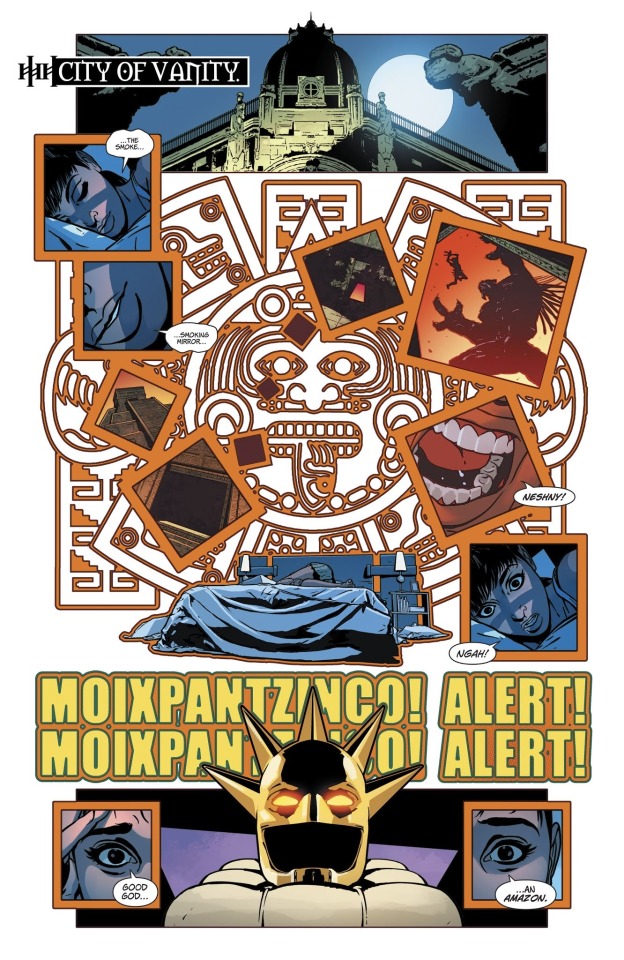
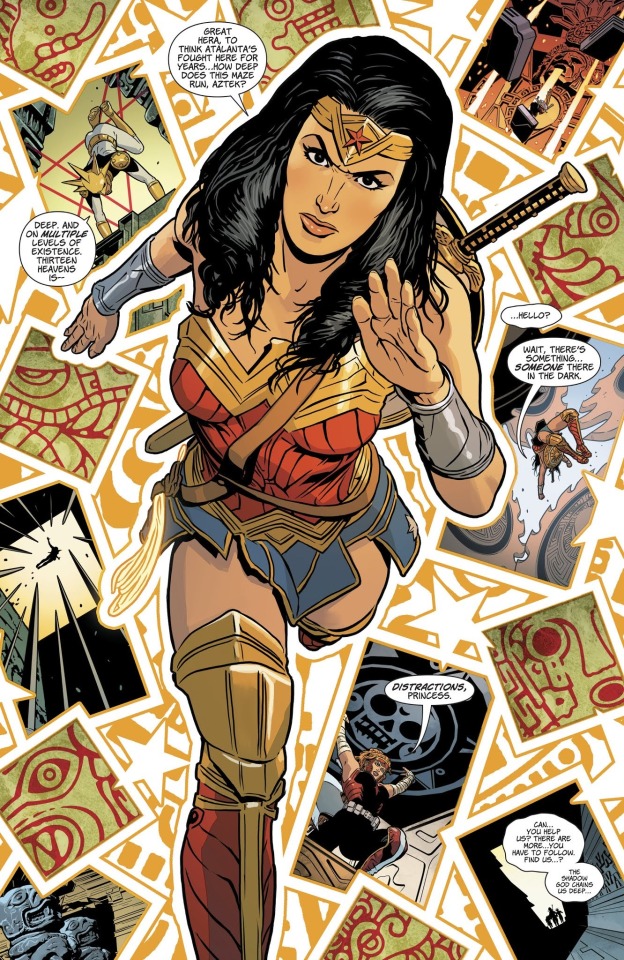

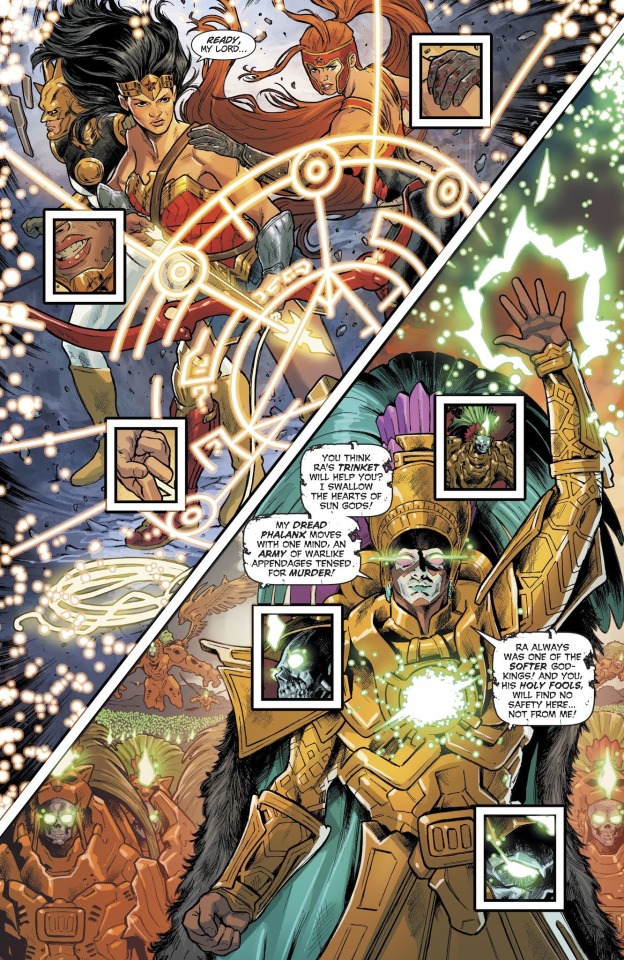
#wonder woman#diana of themiscyra#artemis of bana mighdall#nayeli constant#aztek#dc comics#steve orlando#aco#david lorenzo#romulo fajardo jr.#hugo petrus#saida temofonte
4 notes
·
View notes
Photo
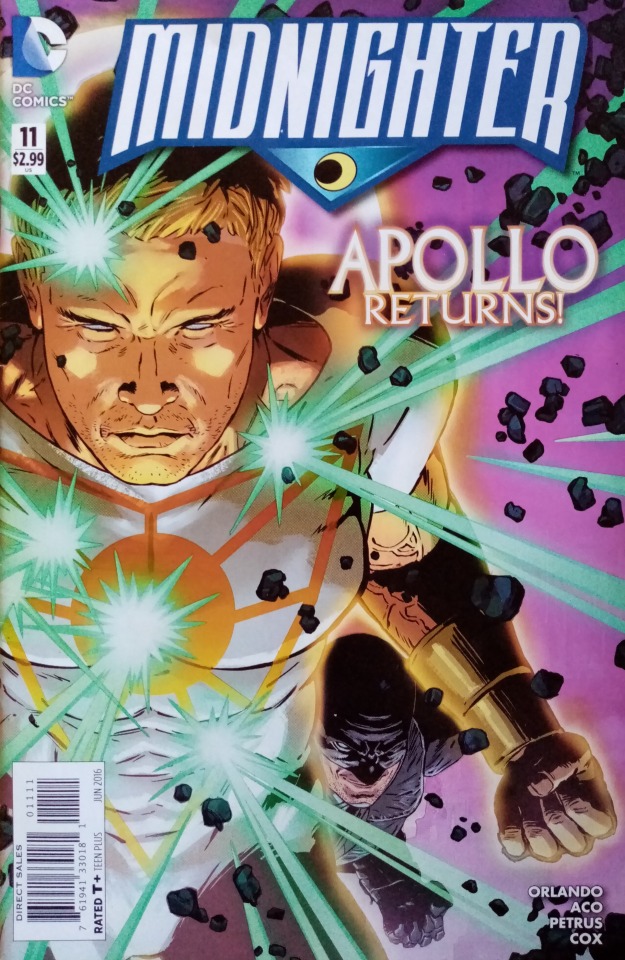

Midnighter #11 (2016)
#DC comics#Midnighter#steve orlando#hugo petrus#jeremy cox#tom napolitano#romulo fajardo jr.#lucus trent#parasite
1 note
·
View note
Video

Hugo Hofstetter and his dog Petrus
🎥 via Ruta360 & 📸 by Alex Broadway
#OMG SAKBDJKSFSKDFBALBF#I'M DYING OF CUTENESS#THIS IS SO ADORABLE#WHAT A GOOD BOY🐶#AND THOSE BLUE EYES😍#PROTECT THESE 2 AT ALL COSTS !!!!!#hugo hofstetter#petrus hofstetter#team arkea samsic
40 notes
·
View notes
Note
as a big les mis fan, i have loved your blog for ages but recently you have especially piqued my interest - in your recent explanatory amis post, you referenced historical metacontext around jehan's death being first. i have a theory about what that metacontext is, but i am FAR from certain and hoping you could offer me some clarification
(also do you have any other pieces of interesting historical metacontext to share with the class)
OK you gotta tell me your Theory too!!! if it lines up or it was something totally different , I wanna hear it alllll
anyway! it's pretty solid that Prouvaire as he finally appears is largely an homage to Hugo's old friend Gérard de Nerval, who had died in 1855; a LOT about Prouvaire's description overlaps with how people talk about Gérard, and the conversation where he's arguing with everyone about the old gods still existing lines up EXTREMELY with conversations that other people remembered having with him ; there's THIS :
Jean Prouvaire was in love; he cultivated a pot of flowers, played on the flute, made verses, loved the people, pitied woman, wept over the child, confounded God and the future in the same confidence (LM 3.4.1, Hapgood)
“God is dead, perhaps,” said Gerard de Nerval one day to the writer of these lines, confounding progress with God and taking the interruption of movement for the death of Being.(LM 5.1.20)
(Hugo still trying to still have this conversation with his friend via novel guts me more than a little!! People are people and we never stop wanting to find the right thing to say oh geez I'm crying for real)
Bahorel , who dies in the same first-charge attack that takes Prouvaire, is also a (even more obvious) homage to a friend; Petrus Borel , who had died in 1859.
They're considered pretty minor figures today, but they were both really noteable names in their day, which is to say...about the late 1820s/early 1830s; they were two of Hugo's most trusted lieutenants in the battle of Hernani, held in French Romantic memory as a breakout event for the movement. And, importantly, they were the first of that core group of more radical Romantics to die.
So while i think there is a lot going on character- and symbol-wise with them being the first two Amis down, I also think there's definitely an Acknowledgement in them being the first of the named group to go; they get the sort of heroic deaths they'd have liked, and maybe the closest thing to Good deaths on the barricade until OFPD? and agh I'm emotional, QUICK tell me your theories before I start crying harder
#Poetry Smash#they get to leave the scene while everyone's still got honest hope for success#by the time more named characters go they know. we all know#not this time. It wasn't your time it wasn't for you#(at least you did everything you could do)#but Prouvaire and Bahorel die with the future so close they can call it#or stand between it and death#before despair and before doom#and on a practical level I would never argue it changes things#but on a symbolic level I think it does#also: they don't NEED the barricade like some do#they show up together. they go together. They're ready already#EMOTIONS#APPARENTLY#Jehan#Bahorel#Actual Romantics in Fictional Paris
70 notes
·
View notes
Note
Hi! Do you have any idea of the etymology of Les Amis’ names/French words that sound like their names?
I’m not an expert on this and someone else probably knows more! But here’s all I know off the top of my head. I’ll go from “ones that have canonical book explanations” to “ones that are vague or more speculative”:
Grantaire: His name sounds like “Grand R” or “big R” in French. As a result, he doesn’t sign his name with a normal signature but with a giant letter R. This is also why it’s a popular fan headcanon for “R” to be Grantaire’s nickname.
Lesgle/Bossuet—this is a pun but I’m still not completely sure I get it. So his name is “Lesgle,” which sounds like “l’aigle” (the eagle) and he comes from Meux. Unrelated to him there’s also a famous bishop who was known as “L’aigle of Meux,” whose real name was Bossuet. So les amis made a pun and Lesgle got the nickname Bossuet as a joke about the bishop.
Jehan Prouvaire— Jehan is obsessed with Medieval literature, so he added an “H” to his name “Jean” to make it more medieval.
Feuilly— sounds like the French word for paper, a nod to his work as a fan maker
Bahorel— sounds like “Borel,” like the name of one of Hugo’s friends Petrus Borel
Courfeyrac— comes from a wealthy family, and there’s a whole thing where he should go by “de Courfeyrac” because he’s upper class— but he refuses and just goes by plain Courfeyrac. Idk much about the origin of the name but it seems to me like it’s supposed to mark him as Wealthy— I guess it’s similar to being named something like “Thaddeus Winston the Third?”
Enjolras— is apparently a very strange uncommon-before-les-mis name that would come from Southern France, and even French people disagree on how to pronounce it (?)
Joly - I know nothing about this name except that his friends like to add extra Ls to it as a joke, I think?
Combeferre— I know nothing. This name is a mystery just like the character himself
Bonus:
Marius Pontmercy: Marius’s name is based on Victor Hugo’s middle name, “Marie.” And “Pontmercy” is the French word for “bridge” and then the French word for “thank you.” (I’ve seen fics with an English Marius named “Marius Thankbridge.”) The Pontmercy name pun is important because it’s why Thenardier never learns who Georges is; when Georges is struggling to tell him “my name is Pontmercy” all Thenardier hears is “merci,” so he just thinks the man is just thanking him.
If anyone knows more, feel free to add on! : D
147 notes
·
View notes
Text
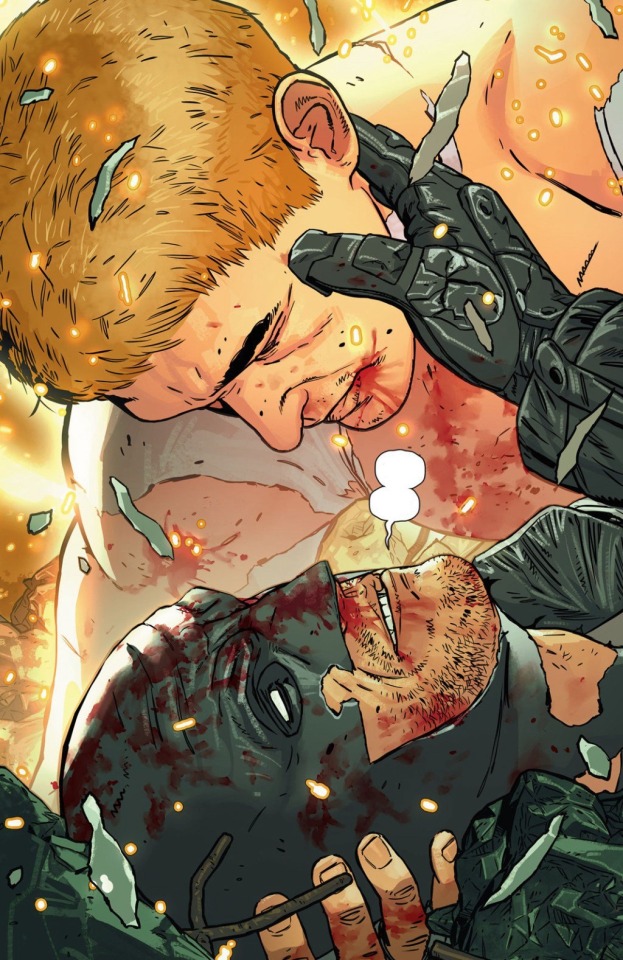
Midnighter and Apollo by Hugo Petrus
2 notes
·
View notes
Text
Historical Dutch names for storytelling (1700s-1980s)
Note: it was common for sons to get the first name of their father, and his father before him etcetera. But the nicknames would be different. For example: there could be 3 generations named Albertus but they would be called Albert, Bert and Bertus. Or the oldest could be called old Bert, or something like that.
MASCULINE
Hendrikus (Henricus, Hendrik, Henk, Henri)
Christianus (Christiaan, Chris)
Johannus (Johan, Hans, Jan, Jannus)
Jacobus (Jacob, Jakob)
Fransiscus (Frans, Frank)
Frederik (Fred, Alfredus)
Antonius (Anton, Antoon)
Albertus (Albert, Bert)
Adrianus (Adriaan, Ad, Aart)
Sebastiaan (Bastiaan, Bas)
Theodorus (Theo)
Wilhelmus (Willem, Wilhelm, Will)
Robertus (Robert, Rob)
Petrus (Peter, Piet, Pieter)
Paulus (Paul)
Martinus (Martin, Maarten, Marten, Martijn, Mathijs)
Marcellinus (Marcus, Marcel, Marco, Marc, Mark)
Marinus (Marius)
Arnoldus (Arnold)
Bernardus (Berend, Bernard)
Gerrit
Harry
Gerardus (Gerard, Geert, Gerhard)
Kornelis
Klaas
Leonardus (Leo)
Nicolaas (Nico, Niels)
Richard
Roelof (Roel)
Rogier
Ronaldus (Ronald, Roy)
Rudolph (Rudolf, Ruud, Rutger)
Stephanus (Stefan, Steven)
Vincent
Kees
Joris
Coenraad (Coen, Koen)
Floris
Teun
Daan (Daniel)
Abraham (Bram)
Barend
Diederik (Dirk, Dick)
Hugo
FEMININE
Johanna (Anna, Anne)
Maria (Marie, Marieke, Marietje, Maartje)
Aagje
Adriana (Adriaantje, Alie)
Alberta
Anita (Annie, Anette, Annemieke, Annemarie, Antje)
Brenda
Brigitte
Carolina (Carola, Caroline)
Catharina (Cato, Catootje)
Dirkje
Engelina (Ellen, Elly, Ellie)
Esther
Evelien (Eveline, Everdina)
Francina (Fransisca, Francien)
Frederika (Frederike, Freedje)
Geertruida (Geertje, Gerarda, Gerda, Gerdina, Gerritje, Getruda, Grietje)
Hanneke (Hanna, Hanne)
Hendrika (Hendrikje, Henrica, Henriëtte)
Janneke (Janna, Jantje, Janneke, Jannie, Janie)
Jolanda
Karin
Magdalena
Tips for making the names unique and interesting:
-Add a c before a k (Hendrik --> Hendrick)
-Turn the second a into an e (Klaas --> Klaes || Nicolaas --> Nicolaes)
#storytelling#writing#tips for writers#story ideas#name ideas#historical names#history#historical inspiration#writing tips#naming characters#historical sims#history simblr
22 notes
·
View notes
Text
savannah “dykevillanelle”’s 2022 reading list!

{ books read 2015 x books read 2016 x books read 2017 x books read 2018 x books read 2019 x books read 2020 x books read 2021 }
books read: 93 (goal was 100 but sometimes we have a hard year)
pages read: 32,179
top 5 fiction:
(best) the overstory (richard powers)
the stars and the blackness between them (junanda petrus)
no one is talking about this (patricia lockwood)
girl, woman, other (bernardine evaristo)
last night at the telegraph club (malinda lo)
top 5 nonfiction:
(best) afropessimism (frank b. wilderson iii)
recovery from schizophrenia: psychiatry and the political economy (richard warner)
the age of surveillance capitalism: the fight for a human future at the new frontier of power (shoshana zuboff)
virology: essays for the living, the dead, and the small things in between (joseph osmundson)
crying in h mart (michelle zauner)
bottom 5:
girl made of stars (ashley blake herring)
the four winds (kristen hannah)
aphrodite made me do it (trisha mateer)
come closer (sara gran)
(worst) lovecraft country (matt ruff)
full list and reviews, in order read, under the cut
yolk (mary h.k. choi) [ya, realistic fiction | ★★★★★]
the secret scripture (sebastian barry) [ historical fiction | ★★★]
she drives me crazy (kelly quindlen) [ya, romance | ★★]
last night at the telegraph club (malinda lo) [historical fiction | ★★★★★]
the stars and the blackness between them (junanda petrus) [romance | ★★★★★]
come closer (sara gran) [horror | ★]
racism without racists: color-blind racism and the persistence of racial inequality in america (eduardo bonilla-silva) [nonfiction, sociology | ★★★]
something to talk about (meryl wilsner) [romance | ★★]
real life (brandon taylor) [realistic fiction | ★★★★]
invisible no more: police violence against black women and women of color (andrea j. ritchie, editor) [nonfiction | ★★★★★]
queenie (candice carty-williams) [realistic fiction | ★★]
the seven husbands of evelyn hugo (taylor jenkins reid) [historical fiction, romance | ★★★]
how we get free: black feminism and the combahee river collective (keeanga-yamahtta taylor, editor) [nonfiction | ★★★★★]
one last stop (casey mcquiston) [romance | ★★★★]
patsy (nicole dennis-benn) [realistic fiction | ★★★]
hani and ishu’s guide to fake dating (adiba jaigirdar) [ya, romance | ★★★]
my year of rest and relaxation (ottessa moshfegh) [realistic fiction | ★★★★]
wilder girls (rory power) [ya, horror | ★★★★]
not straight, not white: black gay men from the march on washington to the AIDS crisis (kevin j. mumford) [nonfiction | ★★★]
sex object: a memoir (jessica valenti) [memoir | ★★]
severed (ling ma) [science fiction | ★★★★]
blood meridian, or the evening redness in the west (cormac mccarthy) [historical fiction, classics | ★★]
her royal highness (rachel hawkins) [romance | ★★]
i’m thinking of ending things (iain reid) [horror | ★★★]
things have gotten worse since we last spoke (eric larocca) [horror | ★★★★★]
evicted: poverty and profit in the american city (matthew desmond) [nonfiction | ★★★★]
boy parts (eliza clark) [realistic fiction, horror | ★★★★]
crying in h mart (michelle zauner) [memoir | ★★★★★]
leave the world behind (rumaan alam) [science fiction, horror | ★★★★]
killing the black body: race, reproduction, and the meaning of liberty (dorothy roberts) [nonfiction | ★★★★]
no one is talking about this (patricia lockwood) [realistic fiction | ★★★★★]
my best friend’s exorcism (grady hendrix) [horror | ★★★★]
helter skelter: the true story of the manson murders (vincent bugliosi) [true crime | ★★]
perfume: the story of a murderer (patrick süskind) historical fiction, horror | ★★★]
the tattooist of auschwitz (heather morris) [biography | ★★]
recovery from schizophrenia: psychiatry and political economy (richard warner) [nonfiction | ★★★★★]
lovecraft country (matt ruff) [horror | ★]
pretty girls (karin slaughter) [horror | ★★★]
therapeutic communication: knowing what to say when (paul l. wachtel) [nonfiction | ★★★]
maybe you should talk to someone: a therapist, her therapist, and our lives revealed (lori gottlieb) [memoir | ★★]
the examined life: how we lose and find ourselves (stephen grosz) [memoir | ★★★]
written in the stars (alexandra bellefleur) [romance | ★]
klara and the sun (kazuo ishiguro) [klara and the sun | ★★★]
go tell it on the mountain (james baldwin) [realistic fiction, classics | ★★★★★]
luster (raven leilani) [realistic fiction | ★★★]
queer and trans artists of color: stories of some of our lives (nia king, editor) [anthology, interviews | ★★★]
annihilation (jeff vandermeer) [science fiction, horror | ★★★★]
my sister, guard your veil; my brother, guard your eyes: uncensored iranian voices (lila azam zanganeh, editor) [nonfiction, essays | ★★★★]
girl made of stars (ashley herring blake) [ya, realistic fiction | ★]
the age of surveillance capitalism: the fight for a human future at the new frontier of power (shoshana zuboff) [nonfiction | ★★★★★]
folklorn (angela mi young hur) [science fiction, fantasy | ★★★★★]
girl, woman, other (bernardine evaristo) [realistic fiction | ★★★★★]
aphrodite made me do it (trista mateer) [poetry | ★]
we do this ’til we free us: abolitionist organizing and transforming justice (mariame kaba) [nonfiction, essays | ★★★★★]
the chinese lady: afong moy in early america (nancy e. davis) [biography | ★★★]
the parisian (isabella hammad) [historical fiction | ★★★★★]
under the udala trees (chinelo okparanta) [historical fiction | ★★★★]
the overstory (richard powers) [realistic fiction | ★★★★★]
queen of teeth (hailey piper) [horror | ★★★]
the southern book club’s guide to slaying vampires (grady hendrix) [horror | ★★★★]
the vegetarian (han kang) [horror | ★★★]
the priory of the orange tree (samantha shannon) [fantasy | ★★★★]
harlem shuffle (colson whitehead) [historical fiction | ★★★★]
the poppy war (r.f. kuang) [fantasy | ★★]
parable of the sower (octavia butler) [science fiction | ★★★★]
the idiot (elif batuman) [realistic fiction | ★★★★★]
tender is the flesh (agustina bazterrica) [horror | ★★★★]
the four winds (kristin hannah) [historical fiction | ★★]
manhunt (gretchen felker-martin) [horror, science fiction | ★★★★]
tomorrow and tomorrow and tomorrow (gabrielle zevin) [realistic fiction | ★★★★]
ace of spades (faridah àbíke íyimídé) [ya, horror | ★★★★★]
nona the ninth (tamsyn muir) [science fiction | ★★★★★]
blitzed: drugs in the third reich (norman ohler) [nonfiction | ★★★]
virology: essays for the living, the dead, and the small things in between (joseph osmundson) [nonfiction, essays | ★★★★★]
we have always lived in the castle (shirley jackson) [horror | ★★★★]
the black flamingo (dean atta) [ya, poetry | ★★]
things we lost to the water (eric nguyen) [realistic fiction | ★★★★]
ruinsong (julia ember) [ya, fantasy | ★★]
flung out of space (hannah templar & grace ellis) [graphic novel, biography | ★★★★★]
everything i never told you (celeste ng) [mystery | ★★★★★]
here the whole time (vitor martins) [ya, romance | ★★]
why freud was wrong: sin, science, and psychoanalsis (richard webster) [biography | ★★★★]
sea of tranquility (emily st. john mandel) [science fiction | ★★★★]
free food for millionaires (min jin lee) [realistic fiction | ★★★★]
my heart hemmed in (marie ndaiye) [horror | ★★★]
greywaren (maggie stiefvater) [ya, fantasy | ★★★★]
bad gays (huw lemmey & ben miller) [biography | ★★★★★]
cinderella is dead (kalynn bayron) [ya, fantasy | ★★]
eileen (ottessa moshfegh) [realistic fiction | ★★★]
artemis (andy weir) [science fiction | ★★★★]
my heart is a chainsaw (stephen graham jones) [horror | ★★★]
the orange eats creeps (grace krilanovich) [science fiction, horror | ★★]
afropessimism (frank b. wilderson iii) [nonfiction, memoir | ★★★★★]
3 notes
·
View notes
Text
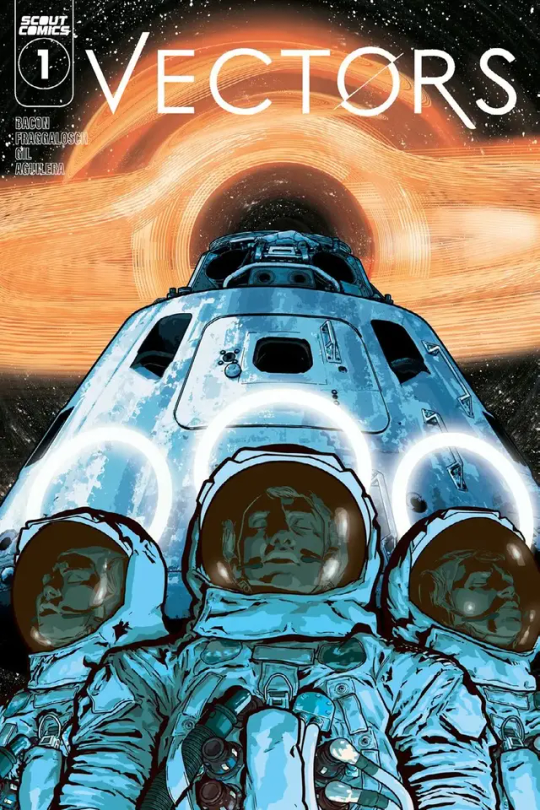

Vectors #1 by Timothy E. Bacon, Grant Fraggalosch and Rubén Gil. Cover by Hugo Petrus. Variant cover by Gil. Due out in November.
"A NASA capsule unexpectedly crashes back to Earth after being presumed lost in space almost fifty years ago. But its sudden return raises more questions than answers when it's revealed that its crew are not only still alive, but haven't aged since their launch. And so begins a far-reaching quest to uncover the mysteries and conspiracies surrounding their original mission, their disappearance and, ultimately, the future-altering reasons of why they've suddenly returned to Earth."
8 notes
·
View notes
Text
Ababa Abaris Abel Abelus Abrahamus Abundantius Acanthio Achillas Acropolistis Adam Adamus Adelardus Adelphasium Ademarus Adephonsus Adhelina Adimantus Adolphus Adriana Adrianus Aegidius Aethalides Aethalos Agathon Agnes Agorastocles Alanus Alaricus Albanus Albertus Albinus Albiorix Alcesimarchus Alcesimus Alco Alexis Alexius Alfredus Alienor Alienora Amadea Amadeus Amalec Amaryllis Ampelisca Andreas Andria Angela Angelus Anna Anselmus Antamoenides Anterastilis Antiochus Antipho Antoninus Apollonius Appendix Aquila Archimedes Argyrippus Ariadna Ariadne Arion Aristobulus Aristophanes Aristophontes Aristoteles Arius Artamo Artemona Arthurus Asa Aspasius Astaphium Augustina Aurelianus Aurelio Aurelius Aureolus Autlesbis Auxilium B Bacchis Baebio Balduinus Ballio Barlaam Bathuel Beata Beatrix Belisarius Benedictus Beniaminus Berengarius Bernardus Bissula Blaedarus Blepharo Branimerus Branimirus Brannimerus Brenamir Bromia Bruno Budimerus Budimiro C Cacistus Cainus Calidorus Callicles Callidamates Callipho Candidus Cappadox Cario Carolus Casimirus Casina Chalinus Cham Chamus Charinus Charmides Christophorus Chrysalus Chrysides Chrysippus Citrio Citro Clarissa Cleareta
Cleomachus Cleopater Cleostrata Collybiscus Cresimirus Crocotium Cunimundus Curculio Curmisagius Cyamus Cylindrus Cynthia Cynthius D Daedalus Daemones Debora Decebalus Delphium Demaenetus Demaratus Demetrius Demipho Demiphones Didacus Dinia Diniarchus Diodorus Dionysia Dionysius Dirsisclaus Diudituslaus Dobrosclavus Domagous Dommagous Domogous Dordalus Dorippa Draccius E Ecbertus Edom Edwardus Egeria Egerius Eleusium Elianor Elianora Eliezer Eligius English Epidicus Epignomus Erasmus Ergasilus Ericus Erotium Esaus Ethelredus Etleva Euclio Eugenius Euhodia Eunomia Eupator Eurydice Eutychus F Feliciana Felicianus Felicitas Ferdinandus Fides Firminus forms Francisca Franciscus Friderica Fridericus G Gaisericus Galileus Gallicles Gamaliel Gaudentius Geisericus Gelasimus Gelasius Gelimer Gensericus Gentius Georgius Gerbertus Gerlachus Gervasius Giddenis Gildasius Gisgo given Godefridus Gorgines Goyslauus Griffinus Gripus Grumio Gualterius Gulielmus Gundulfus Gustavus Gymnasium H Hadrianus Halisca Hamilcar Hanno Harpax Hasdrubal Hegio Helionordis Hellas Henricus Hermes Hesychius Hieronymus Hippocrates Hippolytus Hircanus Hugo Humbertus Hyroeades I Iacobus Iamblichus Ianuarius Iaphet Iaphetus Ignatius Ioannes Iordanes Iosepha Iosephus Iosue Isidora Isidorus Iulia Iustinianus Iustinus J Jeremias Juntinus K Karolus L Labanus Labrax Ladasclavus Lampadio Latin Laurentius Leaena Lemniselenis Lena Leonardus Leonida Lesbonicus Levi Lia Linus Lisia Ludovicus Lyco Lyconides Lycus Lydia Lydus Lysidamus Lysimachus Lystiteles M Maglocunus Manasses Marcion Maria Martina Martinus Mattathias Matthaeus Megadorus Megaronides Melaenis Mellita Menaechmus Messenio Meto Michael Milphidippa Milphio Misargyrides Mnesilochus Moderatus Modesta Modestus Muntimerus Myrrhina Mys N Naim names Neapolio Nechos Nicander Nicanor Nicobulus Nicodemus Nicolaus Noemus O of Olaus Olympio Orontes Orontianus Orontius P Paegnium Palaestra Palinurus Panaetius Panegyris Paphnutius Pardalisca Paris Pasicompsa Patricius Paula Pellio Peniculus Periphanes Perseus Petra Petronella Petrus Phaedria Phaedromus Phanostrata Philadelphus Philaenium Philematium Philippa Philippus Philocrates Philoctetes Philolaches Philomela Philomelus Philopolemus Philoxenus Philto Photinus Phronesium Phygia Pistoclerus Pius Planesium Plesidippus Pleusicles Plutarchus Polybius Polybus Polycarpus Polycletus Polyclitus Polyphemos
Polyphemus Pompilla Pompillus Pomptilla Pompylus Posidonius Pribislavus Procopius Pseudolus Ptolemaeus Ptolemocratia Putiphar Q Quartilla Quintinus R Rachel Radosclavus Radoslavus Raphael Rebecca Renartus Renatus Rhescuporis Roberta Robertus Rodericus Rogerius Roletus Romanus Ruben S Sagaristio Saladinus Salvillus Salvinus Sangarinus Sara Saturio Scapha Sceledrus Sceparnio Scorylo Selenium Sem Semus Sergius Severinus Simo Simon Socration Sophocles Sophoclidisca Sosicles Soteris Sparax Spartacus Sphaerio Stadius Stalagmus Staphyla Stasimus Stephana Stephanium Stephanus Stratippocles Stratophanes Strobilus Sulpicio Syncerastus Syra T Tanais Tanaquil Tancorix Tedusia Tedusius Telestis Terpimerus Testilus Themistius Theodericus Theodora Theodorus Theodosia Theodosius Theopropides Therapontigonus Thestilus Thestylis Thestylus Thomas Tiberius Tlepolemus Tobias Toxilus Trachalio Tranio Triphon Truculentus Turbalio Tycho Tyndarus U Urbanus Ursula V Veronica Vesclevesis Vidus Vincentius Virgo Vitalis Vladimirus Vortigernus Vuissasclavus W Wilielmus Wissisclaus Woiiomyr Y Ysengrimus Z Zeno Zenobius Zenodorus Zenon Zenonina Zenothemis Zoilus
0 notes
Text

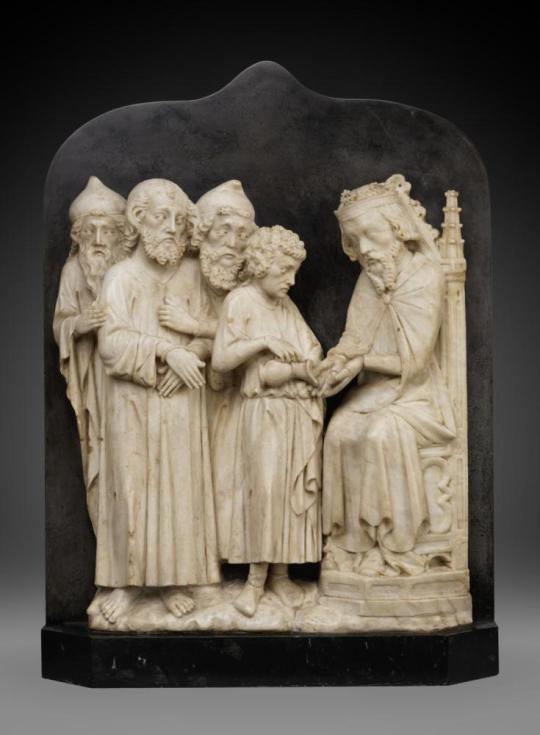



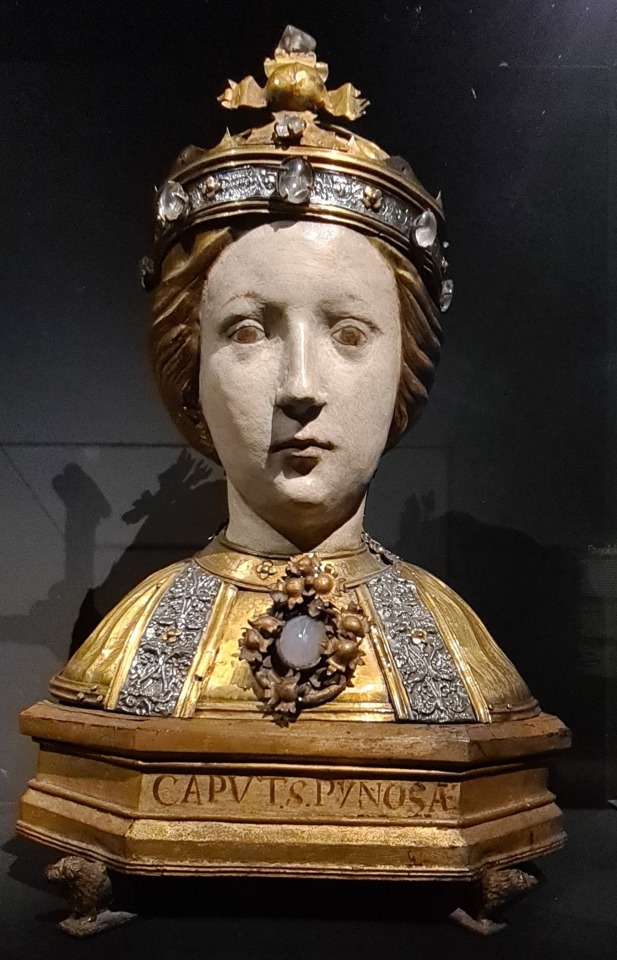



Wat? Gevangenneming van Christus en Christus voor Pilatus (1325-1350) door een anonieme kunstenaar, De geboorte van Jezus, De verrijzenis en de Heilige Christophorus (ca. 1380) door een anonieme kunstenaar, Reliekbuste van Pinosa door Meester Henrik (1426), Drieluik met de Aanbidding door de Wijzen (Triptiek van Jan Floreins) (1479) door Hans Memling, Het sterfbed van Maria (1475-1482/83) door Hugo van der Goes en Adam en Eva (1628) door Georg Petel
Waar? Tentoonstelling Zeldzaam & Onmisbaar – Topstukken uit Vlaamse collecties in MAS, Antwerpen
Wanneer? 7 januari 2024
In het MAS (Museum aan de Stroom) is een tentoonstelling te zien van topstukken uit Vlaamse musea. Aanleiding voor de expositie is het 20-jarig bestaan van het Topstukkendecreet dat zeldzame stukken uit Vlaamse kunstcollecties erkent en beschermt. Niet alleen mogen stukken die zijn opgenomen op de Topstukkenlijst niet buiten Vlaanderen worden verkocht, ook worden ze geconserveerd en zo nodig gerestaureerd. Een kleine honderd stukken van de lijst zijn samengebracht op de derde etage van het MAS.
Twee albasten reliëfs komen uit het, in maart door mij ontdekte, Museum Mayer van den Bergh in Antwerpen. Ze zijn gemaakt door een onbekende kunstenaar. Evenals twee in het Louvre en één in Brussel bewaard stuk hebben ze deel uitgemaakt van een retabel. Op het linker stuk zien we Judas die Jezus verraadt met een kus, Petrus die een soldaat het oor afslaat dat vervolgens door Jezus wordt genezen en de gevangenneming van Jezus door soldaten. Het tweede reliëf stelt de voorgeleiding aan Pilatus voor, die zijn handen wast in onschuld.
Uit hetzelfde museum komen twee panelen van het ‘vierluik Antwerpen-Baltimore’, voorstellend de geboorte van Jezus, de verrijzenis en (op de achterkant van de verrijzenis) de heilige Christophorus. Wat vooral opvalt aan deze paneeltjes is , naast de verbluffend heldere kleuren, de gedetailleerde versiering van onder meer de matras waarop Maria rust en de kleren van de soldaten bij de opstanding.
De reliekbuste van de heilige Pinosa is op het eerste oog een beeld van een hoofd. De bovenkant van dit hoofd kan echter open en het ‘beeld’ blijkt een in een zijden doek gewikkelde schedel van de heilige martelares te bevatten. Ook zonder de , letterlijk en figuurlijk, religieuze lading van dit stuk is het een fraai kunstwerk van de hand van Meester Henrik.
Zijn werken van voor 1400 veelal van onbekende meesters, in de vijftiende eeuw verandert dit. Dit is de tijd van de Vlaamse Primitieven. Eén zo’n werk is het drieluik met de aanbidding door de wijzen. Opmerkelijk aan dit werk is dat we, door een tekst onder op de lijst niet alleen weten wie het geschilderd heeft, namelijk Hans Memling, maar ook wanneer (1479), waar (Brugge) en in opdracht van wie (Jan Floreins). De opdrachtgever zien we geknield, links op het middenpaneel.
Een andere Vlaamse Primitief is Hugo van de Goes. Wat mij altijd opvalt aan werken van deze schilder is de grote zeggingskracht van de handen van de afgebeelde figuren. De handen vertellen gewoonlijk een verhaal op zichzelf, zo ook op het hier getoonde Sterfbed van Maria. We zien de moeder van Jezus, omringd door de discipelen. Vooraan de evangelist Johannes met een boek. In het wit zien we Petrus die de laatste sacramenten toedient. Twee discipelen kijken de beschouwer recht aan en betrekken ons zo bij het gebeuren.
Naast veel schilderijen en de nodige andere kunstvoorwerpen, zijn er op deze expositie ook heel wat beeldbouwwerken te zien. Een klein maar zeer fraai voorbeeld daarvan is Adam en Eva van de hand van Georg Petel. Het ivoren werkje toont een naakte Adam en Eva, met op de achtergrond een boom waarom de slang zich heeft gekronkeld. Eva houdt haar lange hoofdhaar voor haar geslacht. In Adams linkerhand houdt hij de appel. Zo te zien heeft hij nog niet van de vrucht gegeten en, afgezien van de haarlok die Eva voor haar geslachtsdeel houdt, lijkt er nog weinig sprake van schaamte. De twee figuren maken een nogal ontspannen indruk.
0 notes
Photo
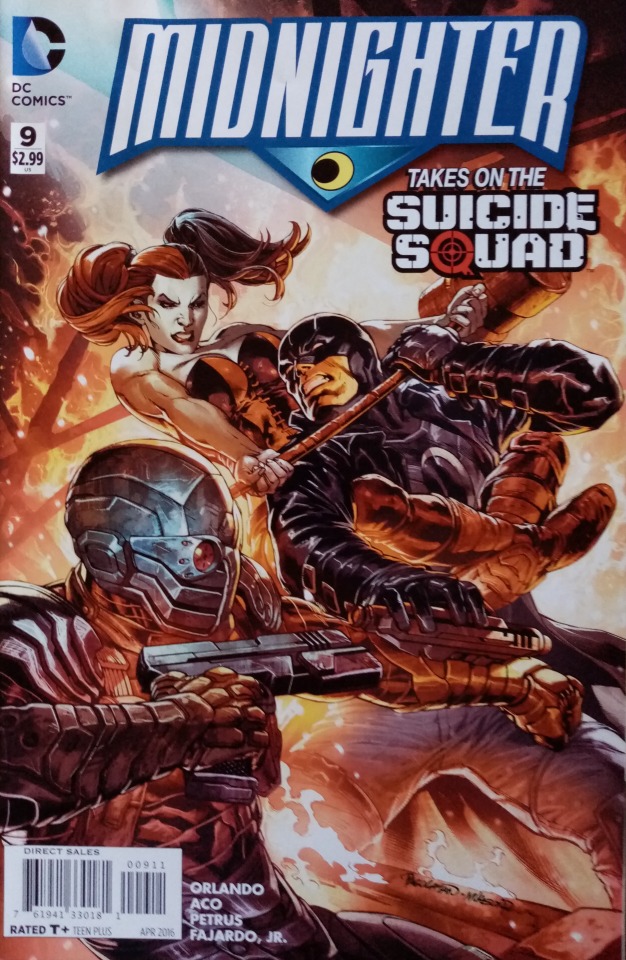

Midnighter #9 (2016)
1 note
·
View note
Note
Hey Pilf, I know there have been conversations about how the French all collectively went through a Scottish/Celtic phase but do you have any resources to prove that? Or can you at least list some of the people you usually reference when you mention this phase? (for example, there was a French writer who changed their name to a Scottish one for Aesthetic reasons but I can't remember their name and Google is useless for me here)
Sure!
The writer you're probably thinking of is Auguste Maquet aka "Augustus MacKeat". He's little-known, but not little-read, being a collaborative partner in a lot of Alex Dumas'* works! If you've read The Count of Monte Cristo or The Three Musketeers, you've read some of his work!
Stendahl's de l'Amour, in 1822, praised the Irish for their brave and loving (and, especially , not English ) spirit-- an influential essay on the popular perception at the time!
Petrus Borel's novel Madame Putiphar also starts in Ireland, and the heroes are Irish--albeit one of them is the daughter of an English lord (who is, of course, a horrible person--both English AND aristocracyXD)
I know the Revue de Paris published multiple articles about Ireland in particular through the 1830s**, more or less swooning over the tragic heroic spirit of Ireland. The rest...gad, forgive me, this is one of those things where, having been asked for examples, I've gone blank. I know I've seen the Scotland/Ireland refs elsewhere; @sainteverge, @thiswaitingheart, any of my fellow Romanticism Nerds of Tumblr, any other suggestions?
As for Why, there are a lot of factors?
Politically, it was easy for French writers to sympathize with Scotland and Ireland really hating the English; the original French Republic had actually tried to link up with Irish rebels against England (it went Badly). And figures like Daniel O'Connell ("the liberator") were hugely popular.
There was also an idea that French and Irish people were somehow especially related? To quote Louis Blanc (a republican, and so relevant on the political side):
The Irish betray so many qualities similar to those we ourselves possess—for example, the same ardor, the same excitable temperament—that it might be said they belong to the same race. It is, however, a historical fact that the Irish and French come from the same Celtic stock, and such a fact explains those similar trails of character I have remarked. I am an advocate of Irish independence. You can say from me, and I give you full permission to say, L'lrlande doit s’apparteinir. Ireland ought to be self ruled. She has every right to bo so, if the will of the people can be interpreted as in favor of the project. And from what I know, you Irish are not content with English rule in your couutry. You want your native rule; hence by the laws of justice you are entitled to it, and should have it....But my opinion on the affair is this: The greatest hope of Ireland lies in a war between France and England. ...There is a possibility of it; but as regards the probability of it I cannot say. In such a case France and Ireland would unite their forces, and the two people serried together, what power on earth could withstand them?
And in the same article, no less a Romanticist than Victor Hugo says:
...Ireland is near us if we look to the ties of mutual sympathy which have existed between both. Thus it can be seen that in general, though England, as I said, comes between us, she cannot break the moral chain that binds the Irish race and the French together. The case, however, would be still better if Ireland’s geographical position could be changed to this side of England and send England about her business to the other side, just where your country now lies. In that new position Ireland would be not alone morally and sympathetically near us—she would be our next-door neighbor also geographically.... in the last century your Irish brigade fought and bled for us, and we essayed to give you aid to wrest your independence from England.
...the system which is prevalent over in Ireland I understand to be that by which 800 or 900 persons own the entire soil. That system means this there are in Ireland 800 or 900 lords and somewhat over 5,000,000 slaves (esclaves). A miserably small fraction tyrannize— the rest, i.e., the vast majority, are the automatons that move at the beck of the fraction. That land system is, I have no hesitation in affirming, a glaringly unjust and absurd one. It is unjust, inasmuch as it pampers and enriches the minority of a people at the expense of the majority, and is, consequently, an outrage upon justice.
This article is from later than what we're generally talking about, but the attitudes toward Ireland are basically the same: The Irish Hate the English Too! They're Just Like Us!
Back in the land of art, the writing of Sir Walter Scott had a huge effect on French Romanticism, and he's been described as "the man who invented Scotland" (in the way we might joke about Hugo inventing France, that is, someone who helped define the concept , especially to people outside the country) .
There was also a woman called Lady Morgan, an Irish woman, who was consciously building up a very Romantic legend of Ireland in France as early as 1806.
So overall, while Ireland and Scotland may not have been mentioned as much as Poland or Greece in Romantic writing and politics, they were definitely a part of the ongoing political/literary discussion!
Anyway, I hope this admittedly rather sparse answer is of some interest!
*there's a tendency to describe Dumas as "stealing" from other authors he worked with, because he was the one whose name went on the covers, but from what I've read--including correspondence with Maquet!-- these really were collaborations, and not at all an uncommon way to write novels at the time,or plays. But getting into that more would be a whole other essay, let alone a tumblr post ><
**if you've got J Stor access, DO check out French romanticism and the Ireland myth, by R. Bolster, to see some a description of some of these articles! They are really Something XD
#Actual Romantics#French Romantics and: Internationalism#(it's super awkward! but it's happening!)#long post
46 notes
·
View notes
Link
0 notes
Text
The Viking disease can be due to gene variants inherited from Neanderthals
Up to 30 percent of men in northern Europe over 60 suffer from a condition called Dupuytren’s contracture. The condition is sometimes called the Viking disease because it mainly affects individuals with northern European ancestry. The disease is significantly more common in men than women and usually begins as a lump in the palm of the hand that grows and causes one or more fingers to lock in a bent position. The condition is usually not painful, but the nodules may sometimes be tender to pressure.
The researchers in the study, led by Hugo Zeberg from Karolinska Institutet and Svante Pääbo from Max Planck Institute for Evolutionary Anthropology, set out to investigate whether genetic variants inherited from Neanderthals are involved in the disease.
Neanderthals lived in Europe and western Asia until about 40,000 years ago, when they were replaced by modern humans. However before Neanderthals disappeared, they mixed with modern humans. As a result, between one and two percent of the genomes of people with roots outside of Africa come from Neanderthals.
“Since Dupuytren’s contracture is rarely seen in individuals of African descent, we wondered whether gene variants from Neanderthals can partly explain why people outside of Africa are affected,” says Hugo Zeberg, assistant professor at the department of Physiology and Pharmacology, Karolinska Institutet.
The researchers used data from three large clinical cohorts in the US, UK, and Finland, which allowed them to compare the genomes of 7,871 sufferers and 645,880 healthy controls. They identified 61 genetic risk factors for Dupuytren’s contracture. The researchers found that three of these were inherited from Neanderthals, and these included the second and third most important risk factors.
The study is further evidence that the intermingling between Neanderthals and our ancestors has important consequences for the prevalence of some diseases, particularly among certain groups.
“This is a case where the meeting with Neanderthals has affected who suffers from illness, although we should not exaggerate the connection between Neanderthals and Vikings,” says Hugo Zeberg.
The study was financed by The Swedish Research Council, The Swedish Brain Foundation, The Erik Philip-Sörensen Foundation, Petrus och Augusta Hedlunds Stiftelse, and Emil och Wera Cornells Stiftelse.
0 notes